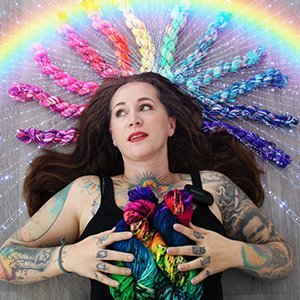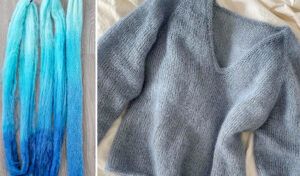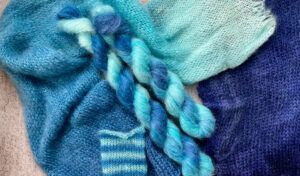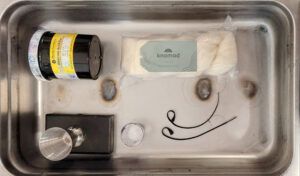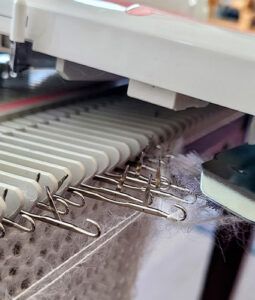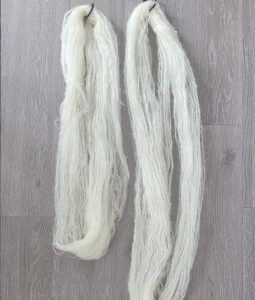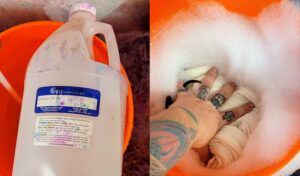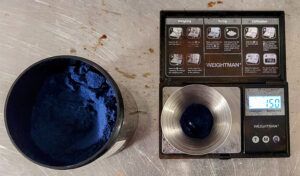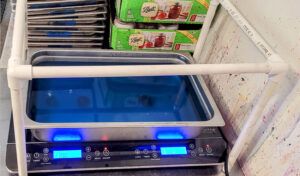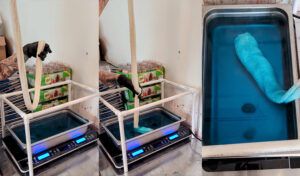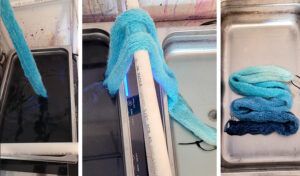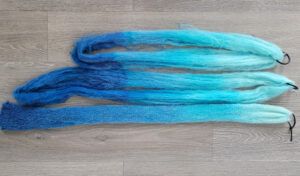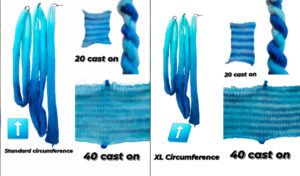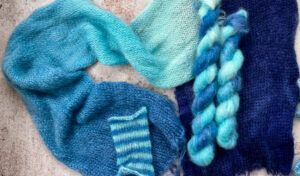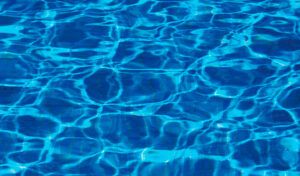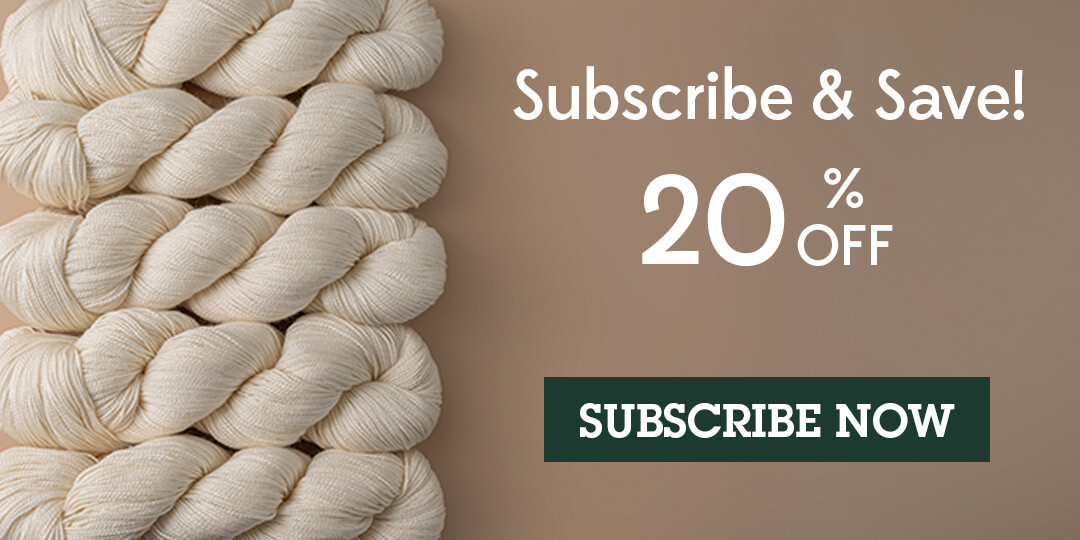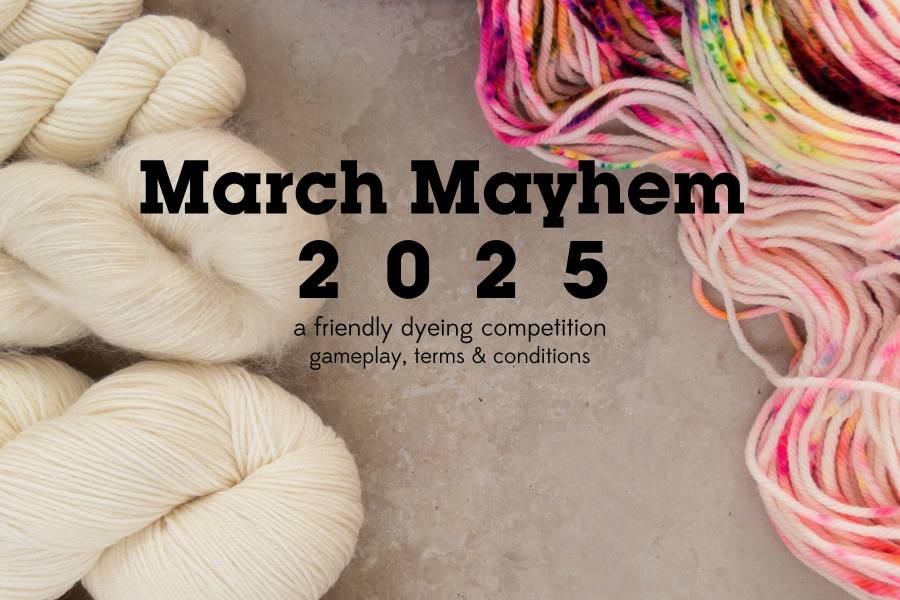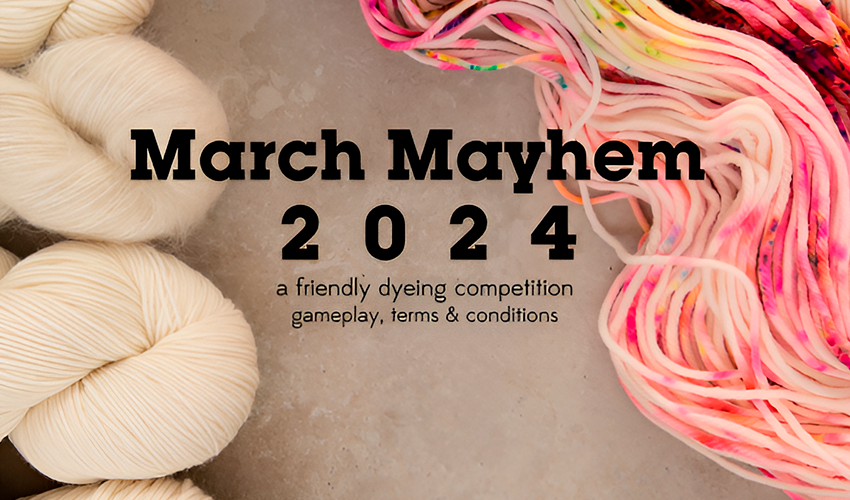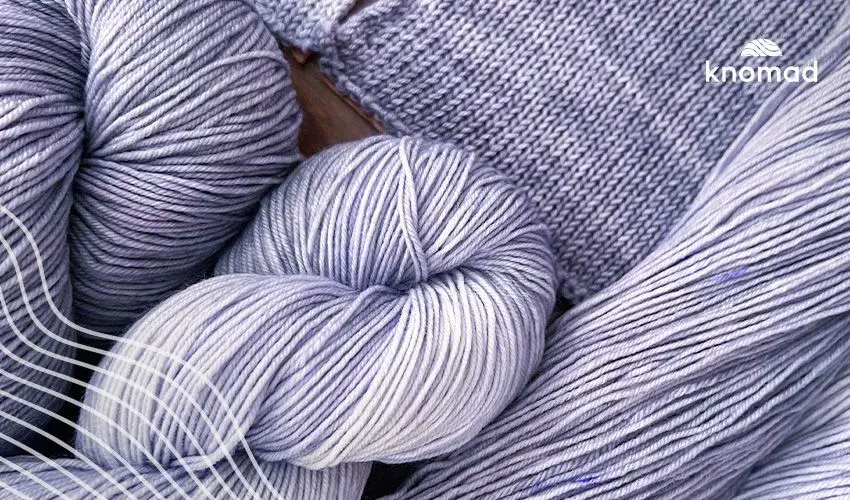Dyeing Yarn For A Specific Pattern (Featuring Knomad Cirrus + Dip Dyeing)
Featuring: Knomad Cirrus (70% Super Kid Mohair, 30% Silk Laceweight)
Our Goal: To take a sweater pattern and reverse engineer the dye application to work up how we want it to featuring the dip dye ombre technique.
Pattern: https://www.ravelry.com/patterns/library/cumulus-blouse
Abstract: Dip dyeing is almost always demonstrated on superwash blends, because they uptake as much as 80% of dye on contact without heat, meaning you can quickly and accurately do an ombre fade. But what about fiber preparations, like mohair silk, that felt easily and require 30+ minutes for the dye to adhere? That is what we are studying today, along with the differences in how a standard skein, XXL skein and pre-knit blank work up in a 20 and 40 cast on.
For those with time to read the finer details, let’s dive in!
YOU WILL NEED:
- 3 Skeins of Cirrus
- Gloves
- Respirator
- A way to heat set your yarn (steamer, proofer, oven, induction plate)
- Acid-Reactive Dye from Dharma Trading in Frozen and Midnight
- Restaurant tray
- Citric Acid
- Gram Scale
- Reclosable Zip Ties
- Knitting Machine
- Synthrapol textile detergent
The pattern calls for mohair held double, so I cake wound 2 skeins and ran them together (held double) on my knitting machine to create a blank canvas for painting. If you happen to have a Brother LK-150, do not run mohair double through it, as it snagged and broke constantly. Do a single. If you do not have a knitting machine, skip this part and we’ll pick up at dip dyeing both the standard skein length and the 88” circumference.
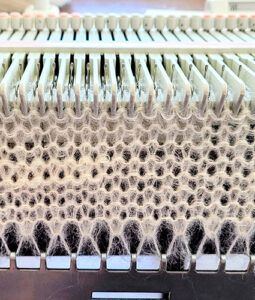 Preferrably without jamming the pins
Preferrably without jamming the pins
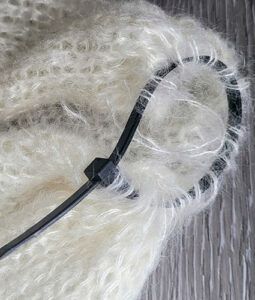 Run a zip tie through open stitches
Run a zip tie through open stitches
We need to properly whet out our fiber so that the dye penetrates evenly. Silk is hydrophobic and will dye patchy without a whetting agent. Fill a large bucket with 3 gallons of water and a teaspoon of synthrapol. Let the yarn soak overnight.
Now we prepare our dye bath. I used 1.5 grams of Frozen as the base color to start with and a tablespoon of citric acid
Fill a 4” tray ¾ of the way to the top. The white structure outside the pot is just plumbing pipes from Home Depot I cut to create a rack I could tie the skein to while it heat sets to keep the top section white.
Bring the dye bath up to 210 degrees (2 degrees under boiling)
And now we start dipping. You need 2 things to felt fiber: heat and agitation. And we’re gonna be doing both. So remember to go slowly and find something you can clip the top of the skein to while the bottom is heat setting. You do have to stand right over the pot for the entire 30 minutes and watch the dye absorb so you can gently roll the next section of the skein in as it clears. This is like watercolor painting, you adjust how much saturation in each section to your eye and your preferences.
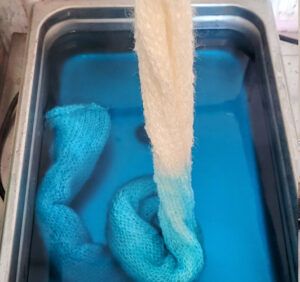
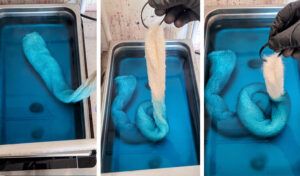 50% (10 minutes) / 75% (15 minutes) / 90% ( 20 minutes)
50% (10 minutes) / 75% (15 minutes) / 90% ( 20 minutes)
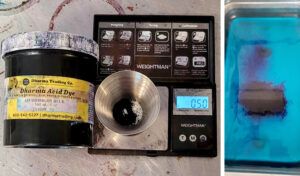 5 gram of midnite / added to the bath
5 gram of midnite / added to the bath
I added a half a gram of midnite to the bath for a more dynamic ombre, and put the bottom 15% of the skein in for 5 minutes, rolled a few more inches, left for another 5 minutes and finished with a brief dunk up to the 50% line and “faded” the line of demarcation by running my fingers up and down the skein at the line.
Remove from the dye bath when you’ve reached the level of saturation you want. It’s ok if that’s before all the dye has absorbed. We’re painting!
It’s obvious that the pre-knit fabric on the right is going to ombre when you wind it and re-knit. But it wouldn’t be a Frost Yarn Dye Tutorial without answering the question: what would it look like for a standard size skein (66” circumference) and XL skein (88” circumference)? We know those won’t ombre, but either stripe or variegate depending on the amount of stitches cast on.
And furthermore, how would the color pool on a small swatch vs a large swatch?
Let’s talk about reverse engineering the dye process to match a vision in our head. When I saw this beautiful pattern that called for mohair silk held double, I saw in my head a piece that worked up like the reflection of a pool on the sleeves and bottom hem and the main body as an ombre. So it was important to consider how many stitches in the cast on, what the size of the skein (or blank) would be, and know the sleeve construction.
Deconstructing the dye batch to the stitch for a pattern is a lifelong skill all dyers perfect, not a concept that could be explained in a single blog post. But a good start is to imagine how you want it to work up in your head, and what color you want to be the focal point and what color is the accent point.
I hope you found this tutorial on how to dip dye Cirrus informative to your dye process and inspiring for your next batch.
Until next time,
Nic
